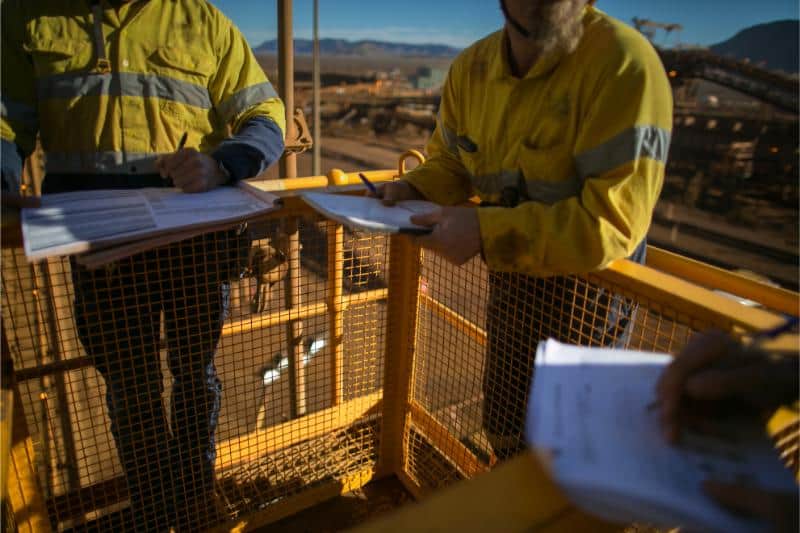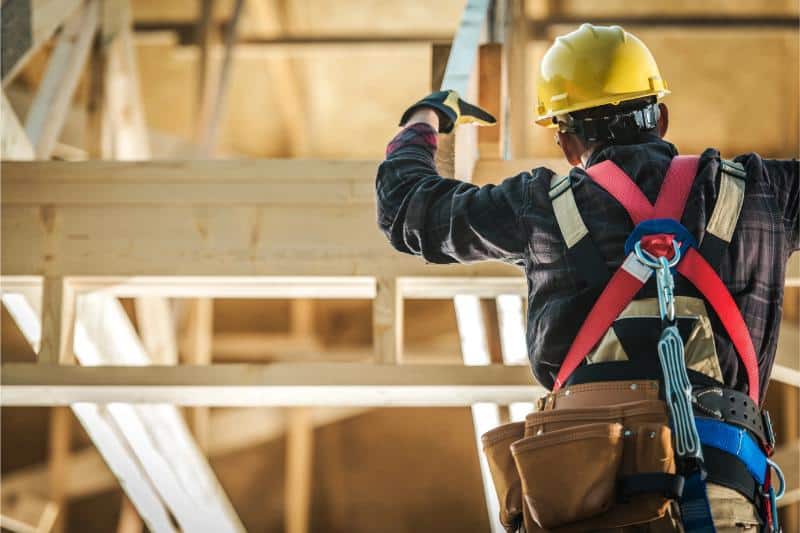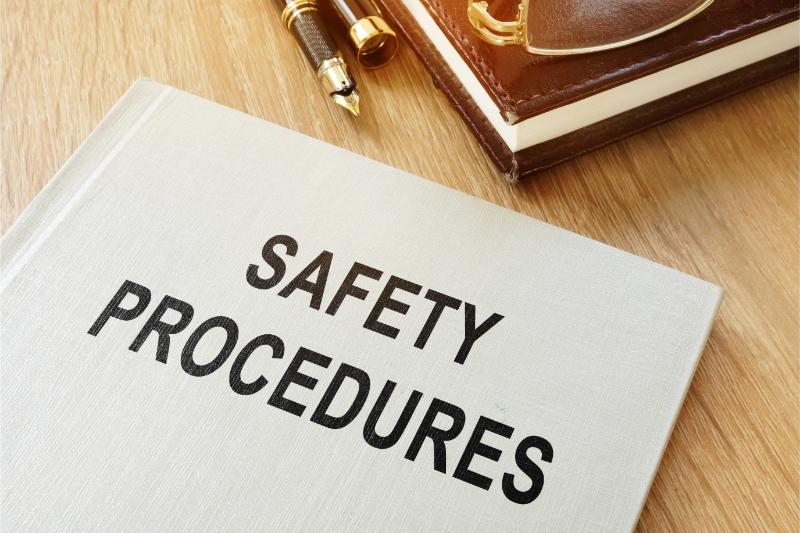Understanding the Stakes: Why Safety Compliance Matters
Construction sites are inherently hazardous environments, and ensuring worker safety, operational efficiency, and regulatory compliance should be at the forefront of every construction company’s priorities. In Phoenix, AZ, adhering to local safety regulations is paramount not only to avoid costly fines but also to enhance your company’s reputation and credibility within the industry.
Failure to comply with safety regulations can have severe consequences, ranging from workplace accidents and injuries to project delays, legal disputes, and hefty penalties. Safirst understands the critical importance of prioritizing safety compliance and aims to empower construction companies to transform their approach, fostering a culture of safety and minimizing risks while maximizing productivity.
The Phoenix Perspective: Local Regulations You Need to Know
Operating in Phoenix, AZ, construction companies must navigate a unique set of local safety regulations and standards. While federal regulations from agencies like OSHA provide a baseline, Phoenix’s specific requirements add an additional layer of complexity that cannot be overlooked.
From fall protection guidelines tailored to the region’s climate and terrain to hazardous material handling protocols that account for the city’s industrial landscape, understanding these local nuances is crucial for effective compliance. Safirst stays up-to-date on the ever-evolving regulations, ensuring that our clients have a comprehensive understanding of their obligations and can make informed decisions to safeguard their operations.
Building a Culture of Safety: Leadership’s Role in Compliance
Transforming a construction company’s safety compliance approach begins with strong leadership. Effective leaders inspire and motivate their teams to prioritize safety, fostering a culture of accountability and proactive risk management. Here are some actionable tips for leaders to champion safety compliance:
- Lead by example: Demonstrate a personal commitment to safety by adhering to protocols, participating in training, and addressing concerns promptly.
- Communicate clearly: Regularly reinforce the importance of compliance through meetings, newsletters, and other channels, ensuring that safety remains a top priority.
- Encourage reporting: Create an environment where workers feel empowered to report safety concerns or violations without fear of retaliation.
- Recognize and reward: Celebrate successes and acknowledge individuals or teams that exemplify a commitment to safety compliance.
By placing safety at the forefront, leaders can influence a cultural shift that permeates every aspect of their construction operations, paving the way for sustainable compliance success.
Conducting a Thorough Safety Audit: The First Step to Compliance
Before developing a comprehensive compliance strategy, it’s crucial to conduct a thorough safety audit to identify potential hazards, assess current practices, and pinpoint gaps. Here’s a step-by-step approach for conducting a safety audit aligned with Phoenix regulations:
- Assemble a team: Build a cross-functional team with representatives from various departments to ensure a diverse perspective.
- Review regulations: Thoroughly review local, state, and federal safety regulations applicable to your construction operations.
- Inspect worksites: Conduct physical inspections of active and upcoming worksites, documenting potential hazards and evaluating existing safety measures.
- Interview employees: Gather insights from workers at all levels to understand their safety concerns and feedback on current practices.
- Analyze data: Compile and analyze the collected data to identify patterns, trends, and areas that require immediate attention.
By conducting a comprehensive safety audit, construction companies can gain a clear understanding of their compliance status and develop targeted strategies to address any deficiencies.
Crafting a Comprehensive Compliance Strategy
Armed with the insights gained from the safety audit, construction companies can begin crafting a comprehensive compliance strategy. This strategy should encompass the following key elements:
- Clearly defined goals: Set realistic, measurable goals that align with local safety regulations and your company’s unique needs.
- Deadlines and milestones: Establish specific deadlines for achieving compliance milestones to ensure progress and accountability.
- Assigned responsibilities: Designate roles and responsibilities for implementing and monitoring the compliance strategy across all levels of the organization.
- Training programs: Develop robust training programs to equip workers with the knowledge and skills required for compliance.
- Regular reviews: Schedule periodic reviews to assess the effectiveness of the strategy and make necessary adjustments based on changing regulations or operational needs.
By maintaining flexibility and adaptability, construction companies can ensure their compliance strategy remains relevant and effective in the dynamic construction environment.
Training Programs: Equipping Your Team for Success
Comprehensive training programs are essential for equipping construction teams with the necessary skills and knowledge to adhere to safety protocols and ensure compliance. Regular safety drills, workshops, and hands-on training sessions should be integrated into your compliance strategy to prepare workers for various scenarios and reinforce best practices.
Safirst offers tailored training programs designed to address the unique challenges faced by construction companies in Phoenix, AZ. Our experienced trainers leverage interactive methods and real-world case studies to engage participants and provide practical, actionable insights.
Some key areas covered in our training programs include:
- Fall protection: Techniques for safely working at heights and proper use of personal protective equipment (PPE).
- Hazard communication: Understanding and mitigating risks associated with hazardous materials, including proper labeling, handling, and disposal.
- Excavation safety: Best practices for trenching, shoring, and soil classification to prevent cave-ins and other excavation-related incidents.
- Confined space entry: Procedures for safely entering and working in confined spaces, including atmospheric testing and rescue planning.
By investing in comprehensive training, construction companies can cultivate a workforce that not only understands safety regulations but also embraces a culture of proactive risk management, ultimately improving compliance rates and reducing the risk of accidents and injuries.
Leveraging Technology: Tools and Apps to Keep You Compliant
In today’s digital age, construction companies have access to a wealth of technology solutions designed to streamline safety compliance efforts. From mobile apps for incident reporting to software platforms that provide real-time regulatory updates, these tools can significantly enhance your company’s ability to maintain high safety standards and stay compliant.
Safirst recommends exploring the following technology solutions:
- Safety inspection apps: Mobile applications that enable on-site inspections, documentation of hazards, and real-time reporting, ensuring immediate action and minimizing the risk of overlooking potential violations.
- Training management software: Platforms that facilitate the scheduling, tracking, and delivery of safety training programs, ensuring that all workers receive the necessary education and certifications.
- Regulatory compliance platforms: Comprehensive software solutions that provide up-to-date information on local, state, and federal safety regulations, as well as customizable tools for creating and managing compliance plans.
- Incident reporting and investigation tools: Applications that streamline the reporting and investigation process for accidents and near-misses, enabling data-driven analysis and proactive measures to prevent future incidents.
By leveraging these cutting-edge technology solutions, construction companies can enhance efficiency, reduce administrative burdens, and gain valuable insights to drive continuous improvement in their safety compliance efforts.
Regular Reviews and Updates: Staying Ahead of the Curve
Safety regulations are not static; they evolve over time to address emerging risks, new industry best practices, and changing environmental conditions. Consequently, it’s imperative for construction companies to regularly review and update their safety compliance strategies to ensure they remain aligned with the latest regulations and industry standards.
Safirst recommends conducting comprehensive reviews of your compliance strategy at least annually, or more frequently if significant changes occur in local or federal regulations. During these reviews, assess the effectiveness of your current practices, identify areas for improvement, and incorporate any necessary updates or modifications.
Stay informed about regulatory changes by subscribing to relevant industry publications, attending seminars and conferences, and engaging with local safety authorities. Additionally, maintain open lines of communication with your teams to gather feedback and insights that can inform your compliance strategy updates.
By staying ahead of the curve and proactively adapting to changing regulations, construction companies can avoid costly violations, minimize risks, and demonstrate a commitment to maintaining the highest safety standards in the industry.
Case Studies of Successful Compliance Transformations
Transforming a construction company’s safety compliance approach is no easy feat, but the rewards are invaluable. Several companies in Phoenix, AZ, have successfully navigated this journey, demonstrating the power of a strategic and proactive approach to safety compliance.
One such company, ABC Construction, faced significant challenges with recurring safety violations and a lack of comprehensive training programs. By partnering with Safirst, they conducted a thorough safety audit, developed a detailed compliance strategy, and implemented robust training initiatives. Within a year, ABC Construction saw a remarkable 75% reduction in safety incidents and achieved full compliance with local and federal regulations.
Another success story is,, a mid-sized construction firm that struggled to keep up with evolving regulations and lacked a centralized system for managing compliance efforts. After implementing a regulatory compliance platform recommended by Safirst, Builders streamlined their processes, gained real-time access to regulatory updates, and increased transparency across their organization. This transformation not only improved compliance but also enhanced their reputation, leading to new business opportunities and client trust.
These case studies demonstrate that by embracing a proactive and strategic approach to safety compliance, construction companies can overcome challenges, mitigate risks, and ultimately position themselves as industry leaders in worker safety and regulatory compliance.





